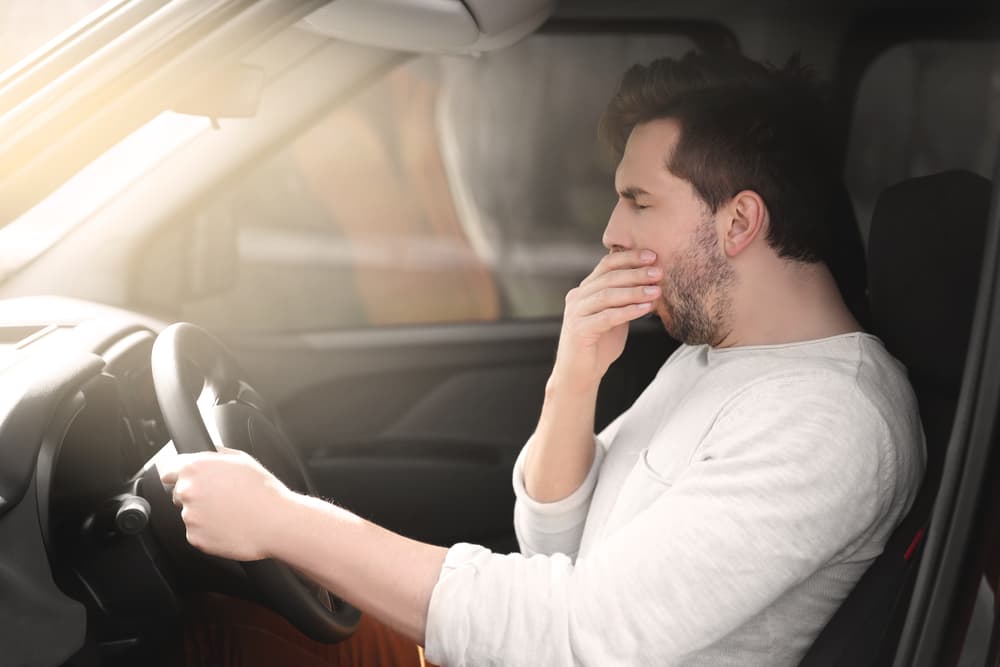Drowsy Driving Detection: A Strategic Priority for Fleets

Why fatigue is a growing threat to fleet safety
For fleet operators managing hundreds, or even thousands, of vehicles, driver fatigue is more than a health concern; it’s a high-impact operational risk. Drowsy driving contributes to thousands of collisions annually, and in commercial fleets, the consequences can be catastrophic: injuries, lawsuits, vehicle downtime, and reputational damage.
What is drowsy driver detection?
Detecting drowsy drivers refers to the use of in-cab technology, such as AI-powered cameras and sensors, to identify signs of fatigue. These systems analyze indicators like prolonged eye closure, head nodding, and erratic steering to detect when a driver may be too tired to operate a vehicle safely.
For large fleets, fatigue detection technology is essential to scaling safety programs and reducing preventable collisions.
How detection technology works in commercial fleets
Modern fatigue detection systems combine:
- In-cab cameras that monitor body and eyelid movements
- Machine vision and AI to detect micro-sleeps and distractions
- Telematics integration to correlate fatigue with hours of service, route complexity, and time of day
- Real-time alerts to notify drivers and escalate to fleet managers when necessary
These fatigue detection tools provide actionable insights that help safety teams coach drivers and adjust schedules to reduce fatigue-related risk.
Real-world results: fatigue detection and coaching that drive impact
Lytx® clients continue to see measurable safety and efficiency gains through proactive coaching and real-time detection of risky behaviors, including fatigue-related driving.
Key outcomes from 2024:
- $1.8 billion saved in claim costs and $521 million in vehicle maintenance savings across Lytx clients
- 73% coaching effectiveness rate, meaning nearly 3 out of 4 coached behaviors were not repeated within two months
- 8.7% reduction in time spent speeding per vehicle, improving both safety and fuel efficiency
These results from Lytx's 2025 Road Safety Report reflect the power of combining AI-driven fatigue detection with timely, targeted coaching. By identifying early signs of drowsiness and intervening quickly, fleets are not only preventing collisions, they’re also improving operational efficiency and protecting their bottom line.
A study from UCSD further highlights the importance and impact of fleet safety: Evaluating and Optimizing Coaching Methodologies for Fleet Safety and Performance: An Evidence-Based Analysis of Differentiation and Optimization Opportunities.
Why fleet leaders are prioritizing fatigue detection
For large organizations, the scale of risk is significant. Proactively addressing drowsy driving can:
- Prevent high-severity collisions
- Reduce insurance premiums and legal exposure
- Improve CSA scores and DOT compliance
- Support driver wellness and retention
How Lytx helps fleets detect and prevent drowsy driving
Lytx Fatigue Detection and video-powered fleet telematics are trusted by some of the largest fleets in North America. Our platform uses machine vision and AI to help detect signs of fatigue in real time, enabling proactive intervention and coaching.
Key capabilities:
- Fatigue detection using driver-facing cameras and AI
- Customizable alerts and notifications for drivers and safety managers
- Integrated coaching tools to address fatigue trends at the driver or fleet level
- Data-driven insights to optimize routes, schedules, and rest periods
Ready to take action?
If your fleet is ready to reduce fatigue-related risk and improve safety outcomes, Lytx can help. Book a demo or contact our team to learn how our solutions can support your safety goals.

